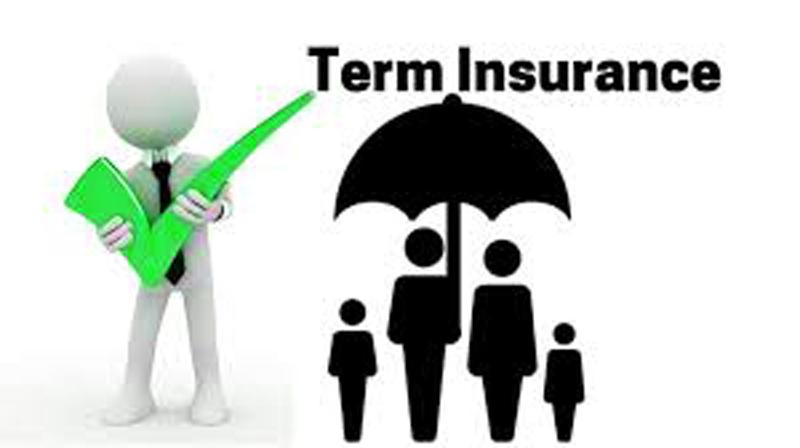Term insurance is a kind of insurance policy which covers you for some definite period of time called the term. The objectives of the policy are to provide you with financial support for your dependents if you pass away during the contract. Let’s get started by looking at the key aspects of term life insurance and what it has to offer.

How Does Term Life Insurance Work?
In reality, the definition of life insurance is as clear as possible. You as a policyholder pay a preset amount (premium) to the insurance company for the selected time period that is usually from 10 to 30 years. In particular, they promise to pay death benefit to your beneficiaries in case of your death within the defined period of your policy.
Here’s a breakdown of the key players involved: What is Term Life Insurance ?
Policyholder: You are the person who purchases a term life insurance policy and pays the premiums.
Insured: These are the people who are being safeguarded by the policy. It can be the policyholder, but it can also be the spouse or the children.
Beneficiary: This is the recipient of death benefit payment in the event the insured died during the policy lifetime. You can select multiple beneficiaries.
Insurance Company: The company that provides the insurance policy and pays the death benefit when a genuine claim is made.
Here’s an example: What is Term Life Insurance
Imagine you buy a 20-year term life insurance policy with the benefit of $500,000 on the face. You pay the premiums each year for 20 years. If it happens that you pass away during the 20-year term that is granted, your beneficiaries will receive $500,000 from the insurance company. This financial assistance can make it possible for them to cover funeral costs, mortgage payments, or living expenses.
Key Features of Term Life Insurance
Term Length: The duration of the term life insurance policies can range from 10 to 30 years in various intervals such as 10, 15, 20, or 30 years. It is up to you to pick the time frame that suits you most in terms of your financial objectives.
Level Premiums: A lot of term life insurance policies have a level premium that stays constant throughout the term. This makes budgeting easier.
Renewability: Some term policies can be renewed. By doing so, you will be able to buy extra coverage for the next term but it could be more expensive because of your age.
Convertibility: Some term life insurance policies are convertible into policies with a cash value element. This can be advantageous for you if you decide that you need permanent coverage later.
No Cash Value: Unlike whole life insurance, term coverage does not accrue any cash value. The only objective here is to provide the death benefit.
Benefits of Term Life Insurance
Affordable Coverage: Term life insurance tends to be the most affordable type of life insurance, implying that a larger number of individuals can get it.
Flexible Coverage: You can choose from different term lengths and coverage amounts to tailor the policy to your unique situation.
Peace of Mind: It is comforting to know, that no matter what happens, your family will be taken care of financially.
Debt Protection: People who want to protect their families from the burden of debt, like a mortgage or student loan, can take advantage of term life insurance.
Income Replacement: The benefit of the death benefit may serve as an income replacement source for your family to support them in the preservation of their living standard.
Considerations When Choosing Term Life Insurance
Term Length: Pick a term period that fits with your financial backgrounds and the needs of your dependants. For example, you may consider going for a long-term contract if you have young children.
Coverage Amount: Remember your family’s financial needs if you were no longer there. This would involve debt settlement, life compiling, and educational expenses for children.
Health: The healthier you are, the lower the premium will be. Usually, the younger and healthier you are, the lower your premiums will be.
Family History: Your family health history may also be another determinant of rate increases.
Renewal Provisions: Knowing renewal terms of your policy like renewal premium is very important.
Conversion Option: If it is possible that you might need permanent life insurance in the future, pick a term life policy with conversion option.
Term life insurance is a beneficial device that allows you to leave funds to your heirs after your death. Through this awareness, you will be better positioned to determine whether term life insurance is the ideal choice for you.

Different Types of Term Life Insurance – What is Term Life Insurance
Although the principle of term life insurance is the same, there are options to suit different circumstances.
Level Term Life Insurance
This is the most common and frequently used form of term life insurance. As being previously said, it gives a fixed death benefit payout and the premiums charge level during the chosen term. This also simplifies budgeting and financial planning.
Increasing Term Life Insurance – What is Term Life Insurance
This type of term life insurance has a death benefit which can grow over time as per the predetermined growth rate. This can be good if you have confidence that the family’s financial needs might increase over the term, for example, with inflation or rising educational costs for kids. Still, the corresponding premiums will escalate over time as well.
Decreasing Term Life Insurance
With this kind of term life insurance, there is a death benefit that diminishes throughout the policy period. This is a perfect scenario where your financial commitments, like a mortgage, are steadily declining. For example, you could get a decreasing term life policy with a death benefit matching the mortgage balance if your primary goal is to keep your mortgage paid off in case of your passing. The premiums for decreasing term life insurance are usually lower than level term life insurance.
Guaranteed Convertible Term Life Insurance
This type of term life insurance lets you convert your plan into a permanent life insurance that comes with the cash value element, even if your health condition has worsened. This is advantageous as you can obtain permanent insurance if your situation changes.
Return of Premium Term Life Insurance
This kind of term life insurance possesses a distinctive element. If you outlived the term of the policy without having to make any claim, you can get a partial or full return of the premiums you had paid. Although it is designed for insuring your premium, the cost of this type of policy is normally higher than classic term life insurance.
Factors Affecting Term Life Insurance Premiums
The cost of your term life insurance premium is influenced by several factors, including: What is Term Life Insurance.
Age: Usually, younger people pay less as a premium than the older applicants do. This reflects the higher risk of death with increasing age.
Health: Your general health and your medical history largely determine your premiums. Those with pre-existing conditions or family history of some diseases can expect to pay higher premiums.
Lifestyle: Risky activities like smoking, skydiving, or certain other sports that have a higher risk of mortality can make you pay for higher premiums.
Coverage Amount: The higher the death benefit you opt for, the more your premiums will be.
Term Length: On average, longer lengths usually have higher premiums relative to the one-month contract.
How to Get Term Life Insurance
If you’re considering purchasing term life insurance, here’s a general process to follow: What is Term Life Insurance?
Compare Quotes: Get quotes from different insurance companies to compare prices and policies.
Consider Your Needs: Assess your financial obligations and the dependents’ requirements to figure out the right coverage amount and term period.
Undergo a Medical Exam: Generally, term life insurance policies ask for a medical exam to evaluate your level of health and various risk factors.
Choose a Policy: Choose an insurance plan that works with your budget, health profile, and requirements.
Review the Policy: Carefully read and understand the terms and conditions of the policy before buying it.
Going through this process and being aware of the various types and factors involved in term life insurance will help you to find an ideal plan for your family.
Conclusion – What is Term Life Insurance
Term life insurance is an inexpensive method that provides you and your loved ones with the security of knowing that they will be financially protected in the event of your passing during the specified term. It delivers the death benefit payment that can be used to pay expenses, to preserve the standard of living and meet their future objectives.
Knowing the fundamental components, advantages, and issues will help you to make up your mind concerning whether you will include term life insurance in your financial planning. In addition to these variations, term life insurances are also available to suit different requirements and they include level, increasing, decreasing, convertible, and return of premium options. Assessing your financial responsibility, dependents’ needs, and risk factors will help you choose the most suitable policy and coverage amount.
Keep in mind that term life insurance is not an investment, it is your safety net. This gives one the assurance that their family members won’t have to undergo severe financial challenges if they are not around anymore. Are you searching for an affordable means to acquire the vital financial security for your loved ones? Look no further, as term life insurance is a valuable tool to consider.



